MATHS: Creating geometrical virtuality
(Martin, Karl Jakop, Jürgen)
The math task during the Field Trip was given by teacher Aivar Halapuu which was to find geometrical shapes (prism, pyramid, silinder, cone and sphere) in natural objects. We examined very different objects very closely to spot the shapes. We took many photos to find the best example and send it to our teacher.
In the next lesson we got a task to make selected photo into a 3D model. We used a web environment called 3dc.io. There it was easy to make the model, because we had before used this software in previous lesson. Our groups model was an anthill.
BENEFIT: This task was necessary because we learned to use methods in the modern IT world. We saw that things learned in lessons were featured in nature as shapes.
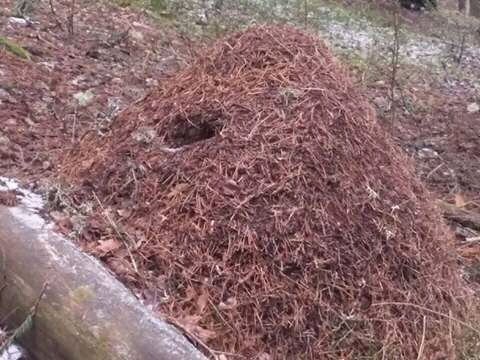
https://3dc.io/gallery/ddf3c1659d5d43c2943d1204accc3c228b5a51dd
BIOLOGY: identifying the species of moss with the help of app
(Greta, Hendrik, Ralf K)
Our biology teacher Merit Kund told us how we can recognize the species of moss using an app and how to determine them by using the app. Firstly, we installed this app to a tablet or a smartphone. The app worked with the internet and it worked very well, it was easy to use.
THIS TASK WAS USEFUL, because we learned how to recognize different species of moss. Besides that we learned that mosses are green and lichens are gray.
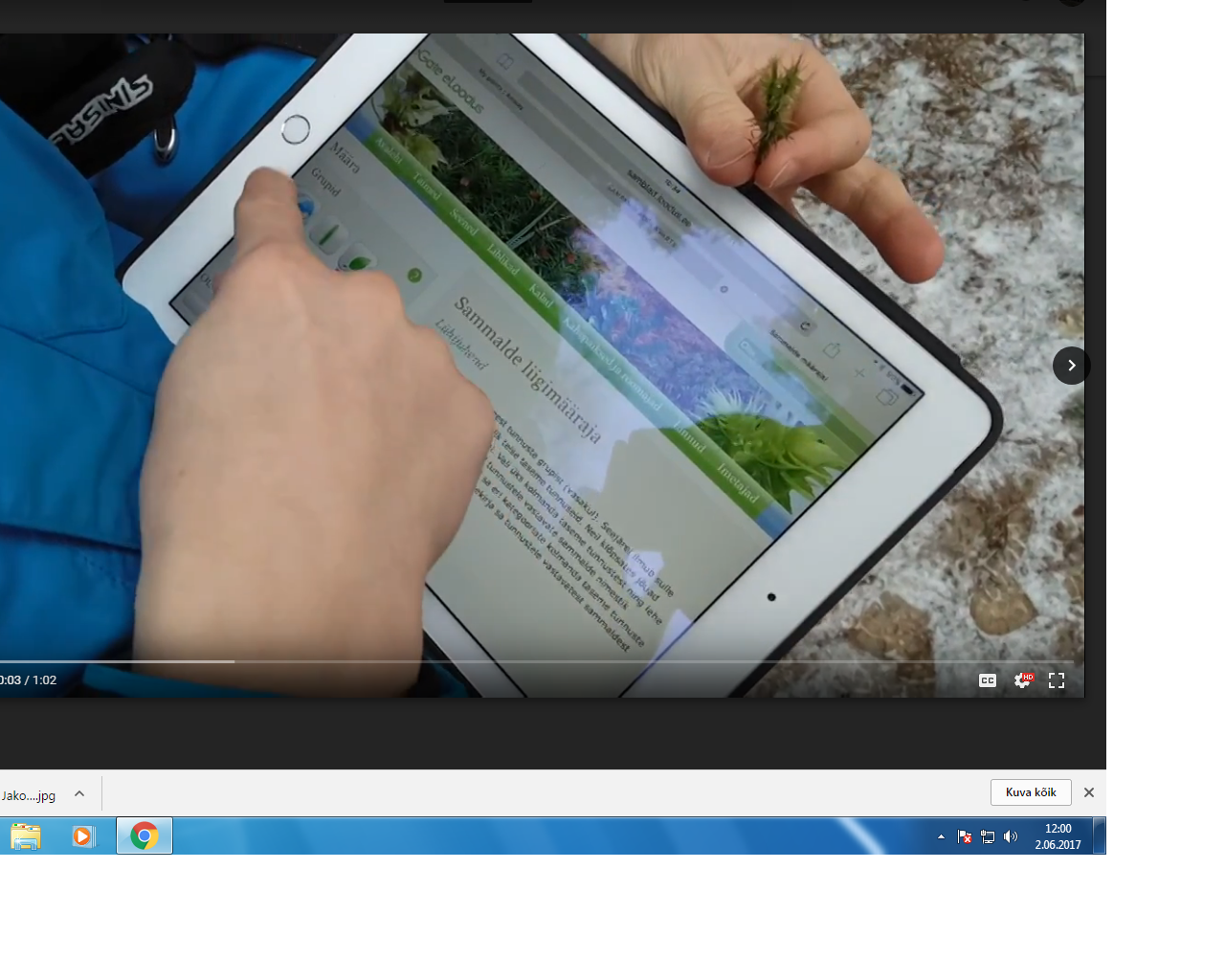
HANDICRAFT - sewing and decorating camping bags
(Kelly, Emma J, Markus Johannes)
On the 10th of March we went to Taevaskoda with our class. Every group had a task to collect materials like leaves, sticks. We needed them to design the bags.
All the material was dried in our art class so we could later type them on the bags. After that we painted the materials with white colour to the bags that we had already sewed together. Two girls set the cringles to the bags. Everyone had to put a string in their bag.
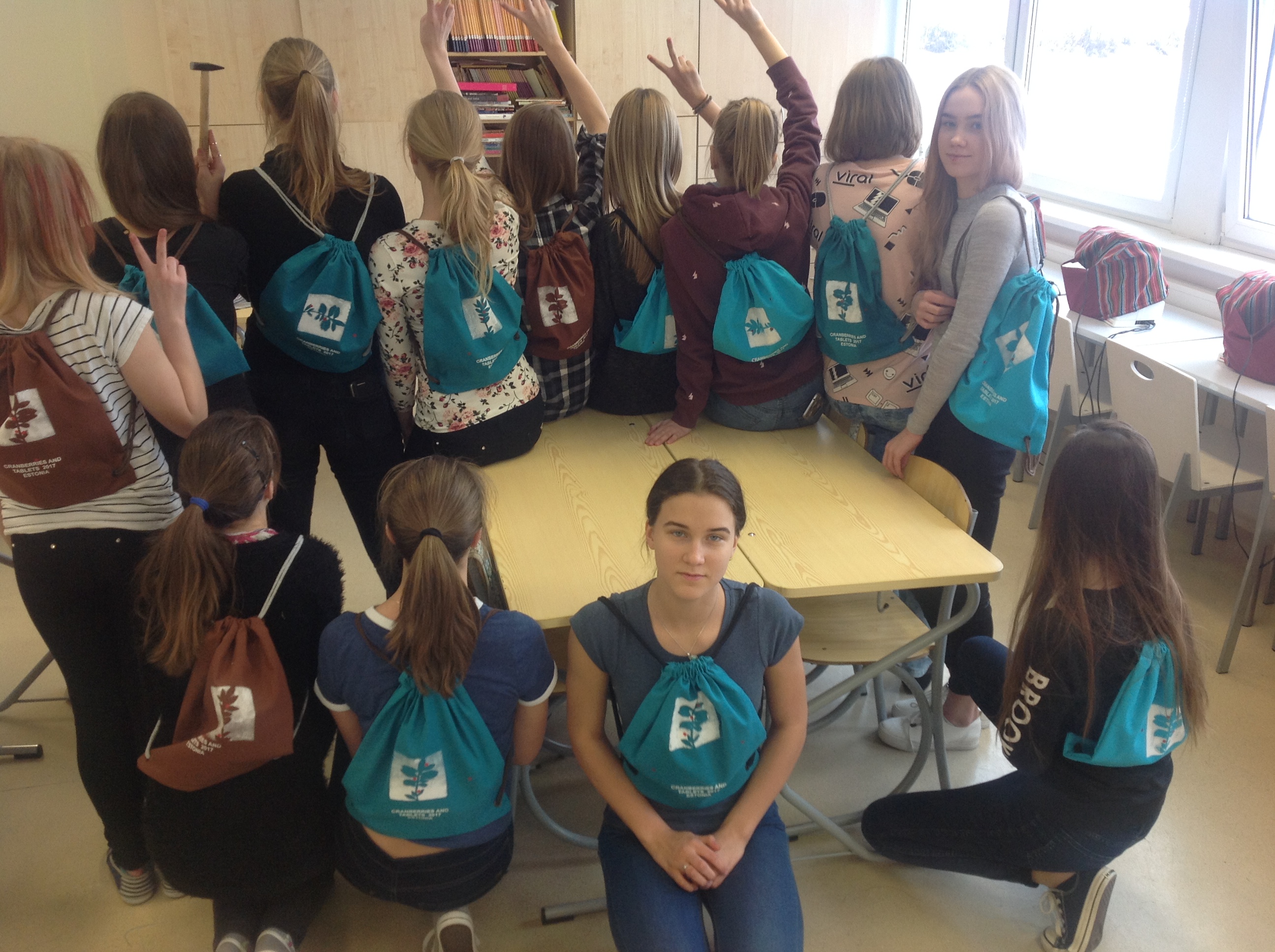
We thought this exercise was USEFUL because we practised making a bag and decorate it with natural products.
TECHNOLOGY (WOODWORK): The perimeter of trees
(Alexandra, Alarich, Ralf P)
On the field trip there was one exercise connected with woodwork. It was to measure the perimeter of five trees and to determine their species. In the woodwork class we discussed with our teacher Sander Breidaks about which tree specie dominated and what was the largest perimeter of all the trees that were measured. The pine trees were dominating and the largest perimeter was 2 metres. The forest we were in was mostly a pine forest. We also made magnets in the woodwork class. We made them by taking a thicker branch and sawing one disk from it, then polishing the disc and after that we sticked our project’s logo on it.
In our opinion these exercises were NECESSARY, because they connected us with physical work and not only with writing.
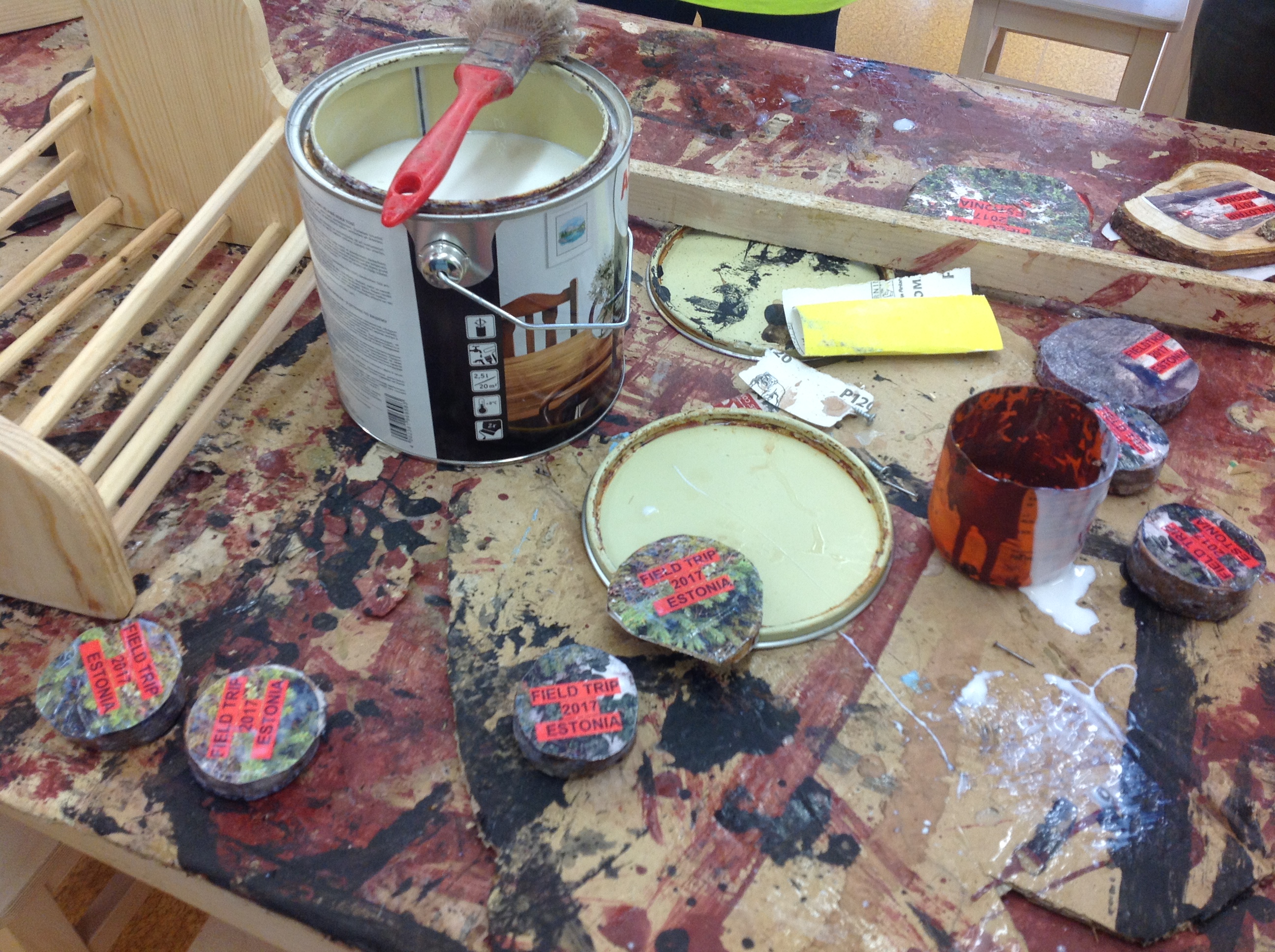
ART: Creating earth art composition
(Lara Johanna, Tim Hendrik, Hanna-Maria)
Teacher Aire Perk told us that earth art is an art form in which the material for the artistic design is the landscape. She showed us many introducing photos and gave examples.
For the next week, we had to take different rocks for the art class. It was fun and creative. We had to create a sculpture of stones and give it appropriate name.
During the field trip we had to take in groups, which we had formed the week before. We collected materials from the nature and made the sculpture. Our sculpture’s name is ,,Väike puu’’.
Next Monday the teacher showed us everyone’s made sculptures. The sculptures were made of wood, moss and cones.
BENEFIT: It developed our creative side and showed that it would be possibly to create any piece of art in nature from natural material.
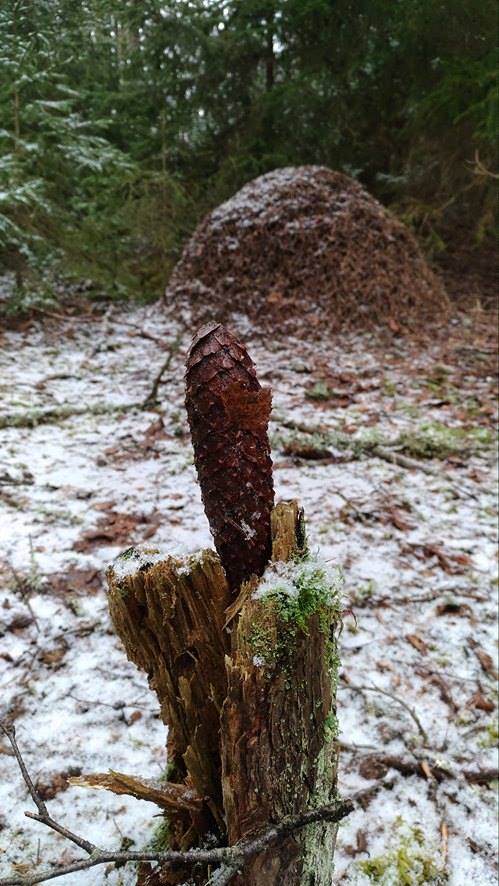
SCIENCE: Collecting garbage
(Kristina, Emma R, Kirsi-Katrin)
Before the Field trip we got to know about safety signs with the help of our teacher Kaire Jakobson. We found out perilous, inflammable, deadly and toxic sign. We also draw them to our science notebook.
During the Field trip we had to find and pick rubbish up. In the forest there wasn’t much rubbish and it was hard to find it. Our special thanks go to our classmate, who found and picked most of the rubbish. In the forest we found empty bags, plastic, paper and packages. After that we had to sort the rubbish and throw it to the trash can.
We think that this exercise was NECESSARY for us to notice the rubbish around us and to keep the nature clean.
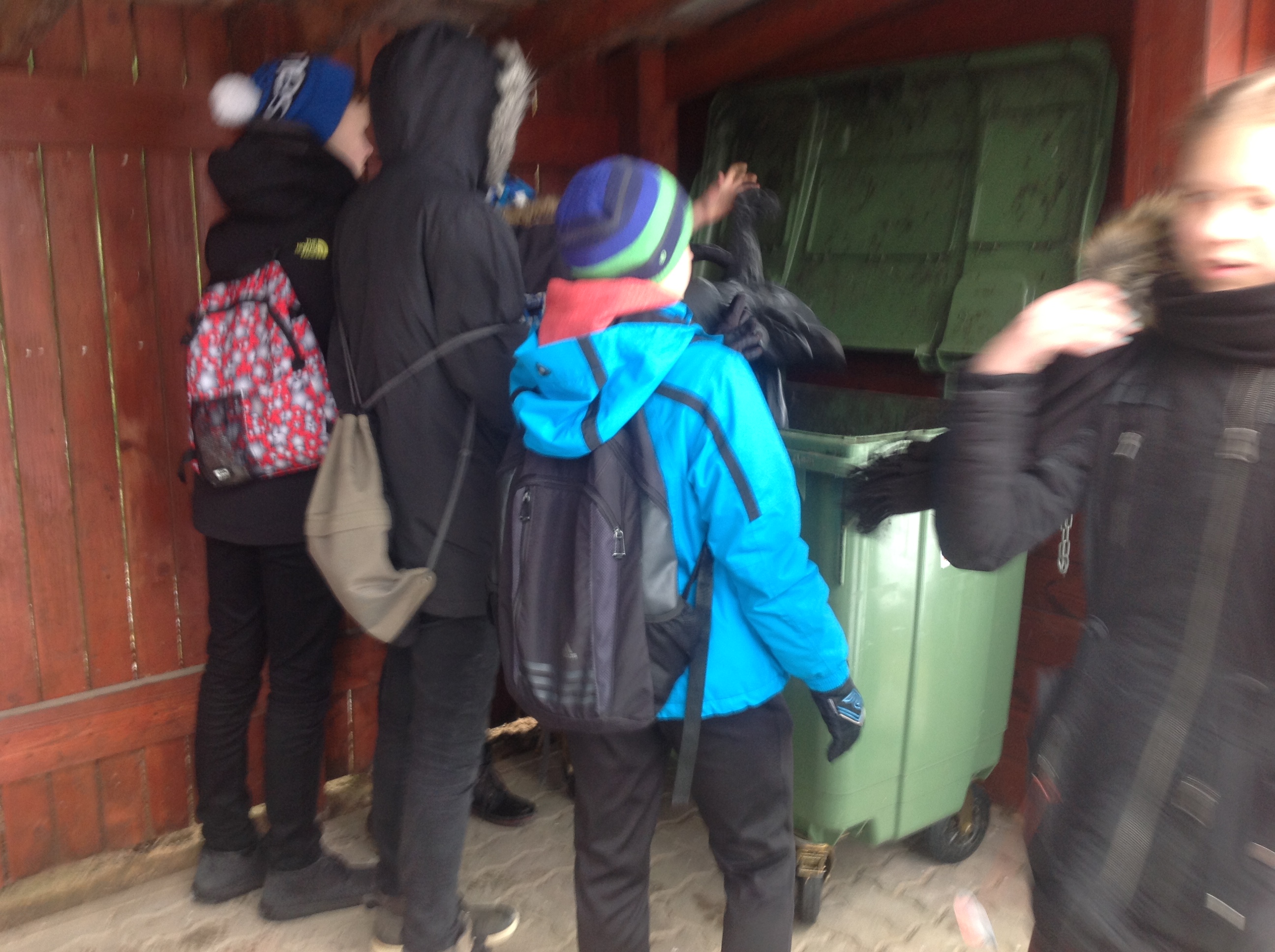
Art: Creating Cards
We went to the Heavens Hall with our class on the 10th of March. Every class had to collect natural materials in their collection box that we later on used to create postcards. We gathered different lichens, tree thorns, branches and leaves.
Next we had to dry the materials so that we could use them to make cards. First we put the materials between newspapers and then we set those newspapers between some books, that we placed on the windowsill.
We placed dried materials on an oblong paper and sprayed over them with spraypaint, creating fascinating patterns. We also used white markers and glittery pens.
This task was very USEFUL for us, because we learned how to create intriguing cards with different materials.
MOTHER TONGUE: Creating a poem
(Angely, Robin, Marie)
In one of the lessons our Estonian teacher Raili Leesalu showed us the slideshow and explained how to write a poem and what to use there (for example epithet).
During the field trip we had to write an 8- verse poem, using figures of speech in poetry. We had to describe a place in Taevaskoda and take a picture of it.
The next lesson was in the computer lab. We had to write the poem on the slide, complete if necessary and add the picture. So,we created the photo postcard.
BENEFIT: We got to know what is epithet and learned how to make poems and comparisons.